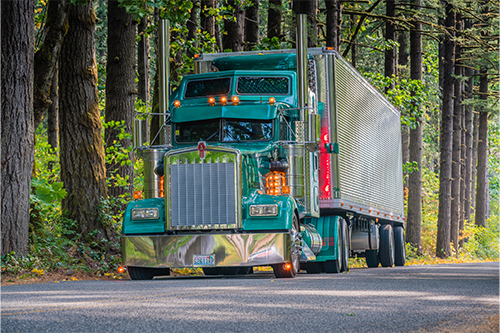
The Commercial Vehicle Safety Alliance’s (CVSA) Operation Safe Driver Week is set for July 9-15, with a focus on speeding.
Throughout the week, law enforcement will be on the lookout for drivers engaging in risky driving, such as speeding, distracted driving, following too closely, improper lane change and impaired driving. Unsafe drivers will be pulled over and issued a citation or warning.
According to the National Highway Traffic Safety Administration (NHTSA), speeding has been involved in approximately one-third of all motor vehicle fatalities in the last two decades. In 2021, speeding was a contributing factor in 29 percent of deaths, while 51 percent of drivers in fatal crashes were not wearing a seat belt.
Consequences of Speeding & Dealing with Aggressive Driving
Speeding is more than just breaking the law, there are several consequences to consider, including:
- Greater potential for loss of vehicle control
- Reduced effectiveness of occupant protection equipment
- Increased stopping distance after the driver perceives a danger
- Increased degree of crash severity leading to more severe injuries
- Increased fuel consumption/cost
Not only can speeding affect the person driving, but it can also affect others on the road. Here are some tips for dealing with aggressive drivers:
- If you are in the left lane and someone wants to pass, move over and let them by
- Give speeding drivers plenty of space in case they lose control of their vehicle
- Adjust your driving accordingly. If a speeding driver is tailgating you or trying to engage you in risky driving, use your judgment to safely move out of the way
- Call the police if you believe a driver is following you or harassing you
Sharing the Road with Others
Part of the Operation Safe Driver Week is to also educate drivers on how to safely share the road with one another. Here are a few tips to keep in mind as you come across commercial trucks, motorcycles, pedestrians and bicyclists on the roadway.
Trucks:
- Stay out of the “No Zone,” the blind spot on the passenger side of the truck
- Don’t brake suddenly in front of trucks; they take much longer to stop than a smaller vehicle
- Give trucks plenty of room to turn; they have a wide turning radius
Motorcycles:
- Actively watch for motorcycles, they can be easily hidden in traffic
- Anticipate hazards that may confront motorcycles and predict how the motorcyclist may react
- Follow at least two-seconds behind a motorcycle
- Watch out when turning left. Most crashes between motorcycles and other vehicles involve turning left at an intersection
Pedestrians and bicycles:
- Always look out for pedestrians and cyclists, especially before turning left at a green light or making a right on red as they are crossing the road
- Leave at least three feet of passing space between the right side of your vehicle and a bicyclist
- Children on bicycles are often unpredictable in their actions. Expect the unexpected
For more information on how to safely share the roads with other vehicles, visit www.operationsafedriver.org.
